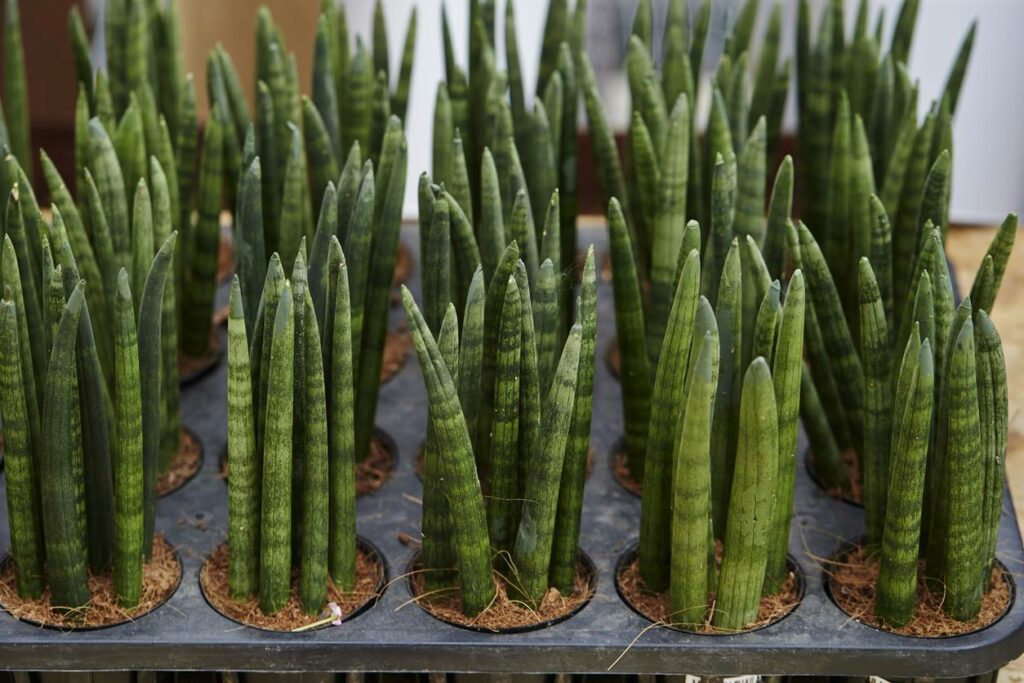
Source www.diys.com
Welcome to our comprehensive guide on caring for the cylindrical snake plant. Whether you’re a beginner or an experienced plant enthusiast, this article will provide you with all the information you need to keep your cylindrical snake plant thriving and healthy. Known for its unique appearance and air-purifying properties, the cylindrical snake plant, also known as Sansevieria cylindrica, is a popular choice for indoor gardens.
In this article, we will discuss the importance of proper care for the cylindrical snake plant, including its light and water requirements, potting and fertilizing tips, common issues, and more. Follow our expert advice and watch your cylindrical snake plant grow into a stunning addition to your home or office.
Light and Environment
Providing the Right Amount of Light
The cylindrical snake plant thrives in bright, indirect light, making it perfect for indoor spaces with moderate natural light. Place your plant near a window with a sheer curtain or in a well-lit room, but avoid direct sunlight that can scorch the leaves. If you notice the leaves turning yellow or pale, it might be a sign that your plant is receiving too much light. On the other hand, if the leaves become dark green and start to curl, it might indicate insufficient light.
Temperature and Humidity Requirements
The cylindrical snake plant is adaptable to a wide range of temperatures, but prefers temperatures between 60-85°F (15-29°C). It can tolerate lower temperatures, but be cautious of frost or prolonged exposure to cold air. In terms of humidity, this plant can survive in average household humidity levels. However, if you live in a very dry climate, consider placing a tray of water near the plant or using a humidifier to increase the moisture in the air.
Watering and Soil
Proper watering is crucial for the health of your cylindrical snake plant. This plant has low water requirements and can tolerate drought, making it a great choice for busy individuals or those prone to overwatering. Allow the soil to dry out completely between waterings, typically every 2-4 weeks depending on the humidity and temperature of your environment.
When watering, thoroughly soak the soil and allow the excess water to drain out of the pot. Avoid letting the plant stand in water, as this can lead to root rot. In winter, reduce the frequency of watering to prevent overhydration. Remember, it is always better to underwater than to overwater your cylindrical snake plant.
Potting and Fertilizing
Choosing the right pot and soil is essential for the healthy growth of your cylindrical snake plant. Use a well-draining potting mix specifically designed for succulents or cacti. This type of soil prevents waterlogging and allows the roots to breathe. You can also add perlite or sand to improve the drainage of the soil.
When repotting your cylindrical snake plant, use a container that is slightly larger than the previous one to allow room for growth. Repotting is typically done every 2-3 years or when the plant becomes root-bound. Fertilize your plant sparingly, preferably during the active growing season (spring and summer). Too much fertilizer can lead to root burn, so follow the instructions on the package and dilute the fertilizer to half or quarter strength.
Table Breakdown of Cylindrical Snake Plant Care
| Topic | Details |
|---|---|
| Light | Bright, indirect light |
| Temperature | 60-85°F (15-29°C) |
| Humidity | Average household humidity |
| Watering | Allow soil to dry out completely between waterings |
| Soil | Well-draining potting mix for succulents or cacti |
| Potting | Use a slightly larger pot when repotting |
| Fertilizing | Sparingly during active growing season |
Frequently Asked Questions (FAQ)
1. How often should I water my cylindrical snake plant?
The cylindrical snake plant has low water requirements. Water it thoroughly every 2-4 weeks, allowing the soil to dry out completely between waterings.
2. Can I place my cylindrical snake plant in direct sunlight?
No, the cylindrical snake plant prefers bright, indirect light. Direct sunlight can scorch the leaves.
3. How do I know if my cylindrical snake plant is receiving enough light?
If the leaves turn yellow or pale, it might indicate too much light. If the leaves become dark green and start to curl, it might mean the plant is not receiving enough light.
4. What type of soil should I use for potting?
Use a well-draining potting mix specifically designed for succulents or cacti. These mixes prevent waterlogging and allow the roots to breathe.
5. Is the cylindrical snake plant toxic to pets?
Yes, the cylindrical snake plant contains saponins, which can be toxic to pets if ingested. Keep it out of reach of curious cats and dogs.
Conclusion
Caring for a cylindrical snake plant can be a rewarding experience. By providing the right amount of light, water, and proper soil, you can ensure the health and growth of your plant. Remember, consistency is key when it comes to caring for any plant. With the information provided in this article, you are now equipped with the knowledge to maintain a thriving cylindrical snake plant in your indoor space. Enjoy the beauty and air-purifying benefits this unique plant has to offer!